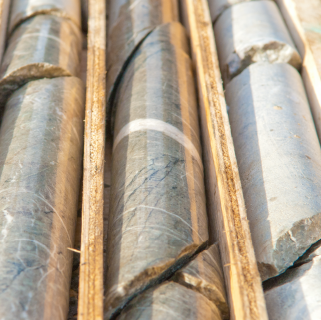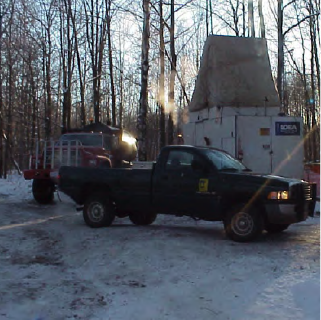PROJECT INFOGRAPHIC
What Is Exploratory Drilling?
Also known as diamond core drilling, this precision exploration technique enables scientists to sample and study deep, subsurface rocks without invasive excavation.

Rob Bergmann
President, F3 Gold
Understanding The Process
F3 Gold is comprised of a highly-specialized technical field team trained in the study of Earth. Our team of geologists are essentially Earth detectives; we use science to uncover the story of how our planet was formed over billions of years, from stardust to the modern world we know today.
As an exploration company, F3 Gold performs many technical activities, or ‘gathering clues’, as part of our scientific investigation process in search of a mineral deposit. Most of these exploration activities take place on the surface, and include mapping, sampling, microscopy, modeling, geophysics, and data analysis.
While these tools begin to provide us a detailed picture of the geology we’re exploring, they are limited to what we can see from the surface. Once we’ve pieced together enough clues to identify certain targets (subsurface areas of interest) that we’d like to collect more data on, we use a precision sampling technique called exploratory core drilling to access these ancient rock specimens deep underground.

GATHERING CLUES
A technical field team of geologists will explore from the surface using a variety of tools and instruments to map, sample, test, and model in order to identify targets (AOI).

THE TRUTH MACHINE
After gathering clues that begin to formulate a hypothesis or ‘picture’ of the subsurface, the team must use a core drill to extract a sample that may prove their theory.

BIG DATA, SMALL PACKAGE
While a drill core sample is pulled from a small hole about the diameter of a baseball, the geologists can gather thousands of critical data points from just one segment.
| So What Does Exploratory Drilling Look Like?
Exploratory core drilling, also known as diamond core drilling, uses a cylindrical bit with embedded industrial diamonds, which rotates at the end of a drill rod (or pipe). The opening at the end of the diamond bit allows a solid column of rock to move up into the drill pipe and be recovered at the surface without invasive digging.


| Exploratory Drilling By The Numbers


| Exploratory Drilling: A Visual Timeline

Site Setup
The exploratory drill pad site setup requires a truck-mounted rig and light surface equipment occupying approximately 2,500 sq. feet.

Site Operation
An exploratory drill pad site requires light vehicle traffic and small surface footprint throughout the drilling operation.

Site Conclusion
After completing the exploratory drilling operations, the drill holes are sealed and capped in compliance with all regulations.

Site Reclamation
The exploratory drill site is reseeded and reclaimed in compliance with all regulations to it’s original condition (or better.)
| ADDITIONAL INFORMATION
Sources & Links:
- Minnesota Department of Natural Resources; https://www.dnr.state.mn.us/lands_minerals/metallic_nf/explore.html
- Minnesota Department of Natural Resources; https://files.dnr.state.mn.us/lands_minerals/mineral_faq/mn_minexpact.pdf
- IDEA Drilling; https://www.ideadrilling.com/technical-sheets/
CONTACT US




